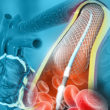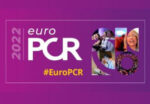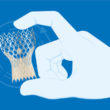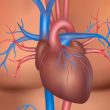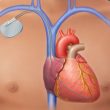Transcatheter aortic valve replacement (TAVR) through transfemoral access has already proven its great benefits, but this access cannot be used in certain patients, and alternative accesses need to be considered for such cases. One of the most commonly used accesses is the transaxillary or transubclavian access (AX), which, however, is associated with more complications (especially...
Revascularization Using DES in Infrapopliteal Disease: Meta-Analysis and Change of Paradigm?
Peripheral vascular disease (PVD) has been under-studied and under-recognized in comparison with ischemic heart disease and stroke, despite its well-known impact on quality of life and its associated morbidity and mortality. According to a systematic review, it was estimated that in 2015 about 238 million people globally had PVD. This number is on the rise....
EuroPCR 2022 | TriCLASP, Evolution at 30 Days
Tricuspid regurgitation (TR) is difficult to manage and is a mortality predictor. At present, surgery is recommended, even though its mortality rate is not low. Endovascular intervention of this entity is currently being developed and according to the European guidelines, it has evidence level IIb C in symptomatic inoperable patients. The TriCLASP included 74 patients...
MitraClip Failure: What Should We Do?
Currently, edge-to-edge therapy with MitraClip has demonstrated efficacy and safety for the treatment of patients with degenerative or functional mitral regurgitation who are at high risk for surgery. However, device-related complications are still present—though their frequency is subsiding due to greater experience, 3D doppler echocardiography development, and technological advancements: loss of leaflet insertion (LLI), single...
Ten Commandments for 2021 Guidelines on Valvular Heart Disease
Since the latest version to the Valvular Heart Disease Guidelines from the European Society of Cardiology, plenty of evidence has been accumulating, finally leading to this updated version. In this regard, below you will find what has been called “10 commandments” that sum up this new document, to keep you in the loop. The incidence...
Procedural Rescheduling Criteria in the Pandemic Era
Patients with structural heart disease are at higher risk in the face of the new coronavirus infection due to both advanced age and numerous comorbidities. All variables must be taken into account when deciding whether a patient can wait (so as to minimize the risk of exposure to the virus) or their pathology must be...
Treating Both Atrial Valves Improves Survival
Courtesy of Dr. Carlos Fava. There a few treatment options for tricuspid valve disease. It is practically limited to diuretics and surgery, is associated to high mortality and, generally, mitral regurgitation. Developing the “edge-to-edge” strategy with MitraClip has been shown beneficial and, at present, there are studies that claim this technique could be greatly beneficial...
Medical vs. Endovascular Treatment in Uncomplicated Type B Aortic Dissection
Under much debate, the treatment of uncomplicated type B aortic dissection is still uncertain. Several studies with methodological limitations have shown that endovascular treatment plus optimal medical treatment might be beneficial, compared with medical treatment alone. This meta-analysis sought to define more clearly the treatment strategy in patients with acute and subacute uncomplicated type B...
The Most Read Articles of August in solaci website
1-FDA Expands TAVR Indication to Low-Risk Patients Both the self-expandable valve Evolut R and its direct competitor, balloon-expandable valve Sapien 3, received the authorization to be indicated for low-risk patients in a long-awaited announcement made on August 16th, 2019. Read also HERE 2-Mechanisms of Post PCI Persistent Angina Angina persistence or recurrence after PCI can...
Permanent Carotid Coil Filters in Patients with Atrial Fibrillation
This new strategy to reduce the risk of stroke in patients with atrial fibrillation is technically feasible and safe, even though long-term outcomes are yet to be seen and despite the evidence available, for instance, left atrial appendage closure devices. It is true that they could be used simultaneously, but its synergy and cost have...

